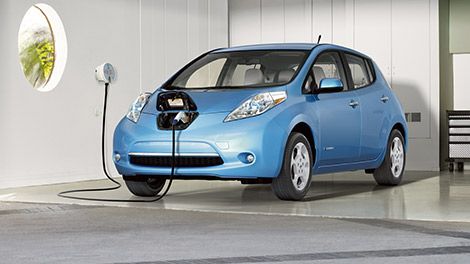As electric vehicle (EV) ownership becomes more common, it’s inevitable that owners will encounter negative comments and misinformation about EVs on social media. While it can be tempting to engage in heated debates, handling such comments with poise and factual information can be more effective. Here’s a comprehensive guide on how to navigate these interactions, ensuring you promote a positive image of EVs and educate others in the process.

1. Understand the Source of Negativity
Before responding to negative comments, it’s essential to understand where they’re coming from. Common sources include:
- Misinformation: Many people are simply misinformed about EVs. They may have outdated information or misconceptions about range, charging infrastructure, or environmental impact.
- Personal Preference: Some individuals prefer traditional internal combustion engine (ICE) vehicles and may feel threatened by the rise of EVs.
- Economic Concerns: The cost of EVs, both upfront and perceived long-term, can be a point of contention.
- Political Views: Some people view the promotion of EVs through a political lens, which can fuel negative commentary.
2. Stay Calm and Composed
Responding to negativity with aggression or defensiveness rarely leads to productive discussions. Instead, approach each comment with a calm and composed demeanor. Remember, you’re representing the EV community, and your conduct can influence public perception.
3. Educate with Facts
One of the most effective ways to counteract negative comments is by providing factual information. Here are some common myths about EVs and how to address them:
- Myth: EVs have a limited range.
- Fact: Many modern EVs offer ranges of 200-300 miles per charge, with some models exceeding 400 miles. Additionally, charging infrastructure is rapidly expanding, making long-distance travel more feasible.
- Myth: Charging takes too long.
- Fact: While charging times can vary, fast chargers can replenish an EV’s battery to 80% in about 30 minutes. For daily use, many EV owners charge overnight at home, similar to how we charge our phones.
- Myth: EVs are not environmentally friendly due to battery production.
- Fact: Studies show that over their lifetime, EVs produce fewer greenhouse gases than ICE vehicles, even when accounting for battery production and electricity generation.

4. Share Personal Experiences
Personal anecdotes can be powerful. Share your own experiences as an EV owner:
- Reliability: Discuss the reliability of your EV, including any maintenance (or lack thereof) compared to previous ICE vehicles you’ve owned.
- Cost Savings: Highlight the cost savings on fuel and maintenance over time. Many EV owners report significant savings in these areas.
- Convenience: Talk about the convenience of charging at home and the decreasing inconvenience of charging on the go with the growing network of fast chargers.
5. Highlight the Positive Impact
Emphasize the broader benefits of EVs, such as:
- Environmental Impact: EVs contribute to reduced air pollution and greenhouse gas emissions.
- Energy Independence: EVs can help reduce dependence on fossil fuels, promoting energy independence.
- Technological Innovation: The rise of EVs drives innovation in battery technology, renewable energy, and sustainable transportation.
6. Engage Respectfully
When engaging with negative comments, it’s crucial to remain respectful and empathetic. Acknowledge the other person’s concerns and provide thoughtful responses. For example:
- Acknowledge Concerns: “I understand why you might be concerned about charging infrastructure. It’s true that it was a challenge in the past, but recent developments have significantly improved the situation.”
- Provide Resources: “If you’re interested, here’s a recent study/article that addresses some of the common concerns about EVs and their environmental impact.”

7. Know When to Disengage
Not every comment warrants a response. Some individuals may be entrenched in their views and unwilling to consider new information. In these cases, it’s often best to disengage rather than prolong an unproductive argument. Your time and energy are valuable, and focusing on those willing to engage in meaningful dialogue is more productive.
8. Use Social Media Features
Take advantage of social media features to manage your interactions:
- Mute or Block: If someone is persistently negative or abusive, don’t hesitate to mute or block them.
- Report Abuse: If a comment crosses the line into harassment or hate speech, report it to the platform.
- Curate Your Feed: Follow and engage with positive, informative accounts that promote EVs and sustainability. This can help balance your social media experience and keep you informed.
9. Join and Support EV Communities
Engage with online communities of fellow EV enthusiasts. These groups can provide support, share experiences, and offer tips for dealing with negativity. By staying connected with like-minded individuals, you can gain new insights and feel more confident in your advocacy.
10. Promote Positive Content
Create and share positive content about EVs. This can include:
- Success Stories: Highlight stories of individuals or businesses that have successfully transitioned to EVs.
- Innovations and Advances: Share news about advancements in EV technology, charging infrastructure, and renewable energy.
- Sustainable Practices: Promote broader sustainability practices that align with the ethos of EV ownership.
Conclusion
As an EV owner, you have the opportunity to be an ambassador for a cleaner, more sustainable future. By handling negative comments on social media with grace, facts, and positivity, you can help educate others and contribute to the growing acceptance and adoption of electric vehicles. Remember, change often starts with a single conversation, and your efforts can make a significant difference.